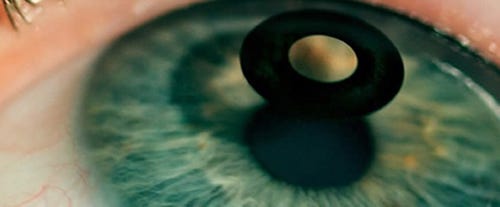Kamra Inlay Intracorneal Implant Squeaks by FDA Panel
June 10, 2014
Although with a less than resounding endorsement, FDA's Ophthalmic Devices Panel has recommended approval of AcuFocus's Kamra Inlay intracorneal implant for the improvement of near vision in patients with presbyopia.
The first-of-its-kind device, which is a polyvinylidene fluoride ring placed intrasomally in the cornea of the nondominant eye, the Kamra implant is placed under a corneal flap. It reduces the aperture of the eye and increases the depth of focus to improve near vision. According to AcuFocus, Kamra poses little or no risk to distance visual acuity and, unlike current surgical options, the Kamra device is removable and sustains its effect over time.
According to Nicholas Tarantino, OD, AcuFocus chief clinical and regulatory officer, unlike current refractive surgeries, the Kamra Inlay does not diminish distance vision, which remains binocular.
|
Kamra Inlay Intracorneal Implant (Courtesy lasikistanbul.net) |
On the question of whether the device is effective, the vote was 7-1 yes. Not so clear-cut was the issue of safety. The chairman had to weigh in to cast the deciding vote against, to break a 4-4 tie. When asked whether the benefits outweigh the risks, four panelists voted yes, three voted no, and 1 abstained.
"There's likely something controversial going on if it's splitting down the middle," Neil M. Bressler, MD, chairman of the Ophthalmic Devices Advisory Committee, chief of the Retina Division at The Wilmer Eye Institute, and professor of ophthalmology at the Johns Hopkins University School of Medicine, Baltimore, MD, told Medscape.
Kamra was given CE Mark approval in 2005, and was launched in Japan in 2009 and in Europe in 2010. Since then, the device has been implanted in some 20,000 patients in 33 countries. Of these, 362 inlays have been removed, mostly due to vision complaints involving distance and near vision.
According to data presented to the FDA committee in the pivotal study, Kamra met its primary endpoint with 75% of eyes achieving uncorrected near visual acuity of 20/40 or better. In the study, 396 out of 474 eyes with the inlay (83.5%) had near visual acuity of 20/40 or better after 12 months. A total of 44 inlays (8.7%) were removed during the course of the study, mostly due to vision complaints.
"As long as people understand the benefits that they get out of this product and the potential downsides, I think its been demonstrated that it's an effective product for a good percentage of the people that it's intended for," industry representative Michael Pfleger told MassDevice.com.
Stephen Levy is a contributor to Qmed and MPMN.
About the Author(s)
You May Also Like


.png?width=300&auto=webp&quality=80&disable=upscale)
